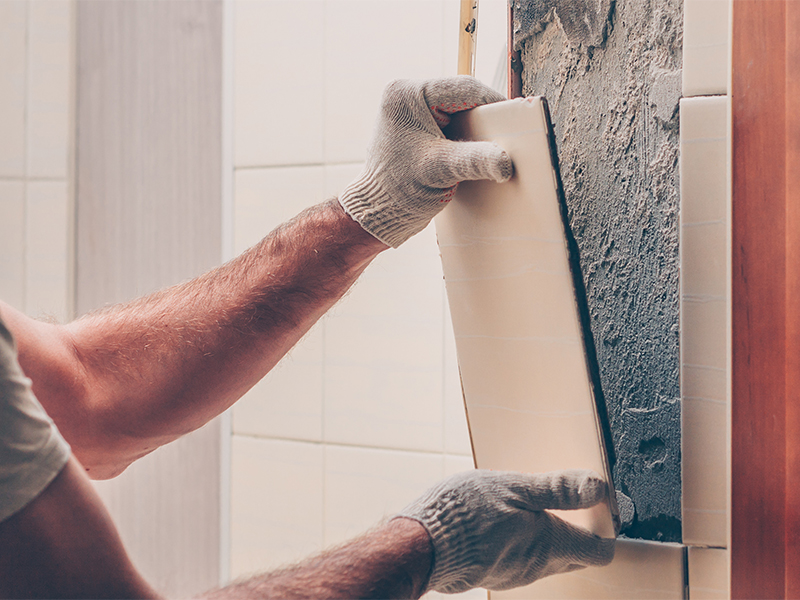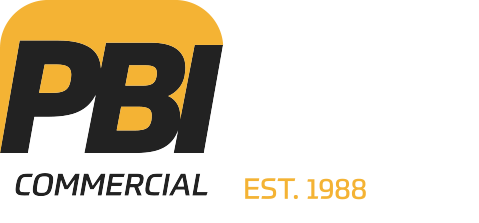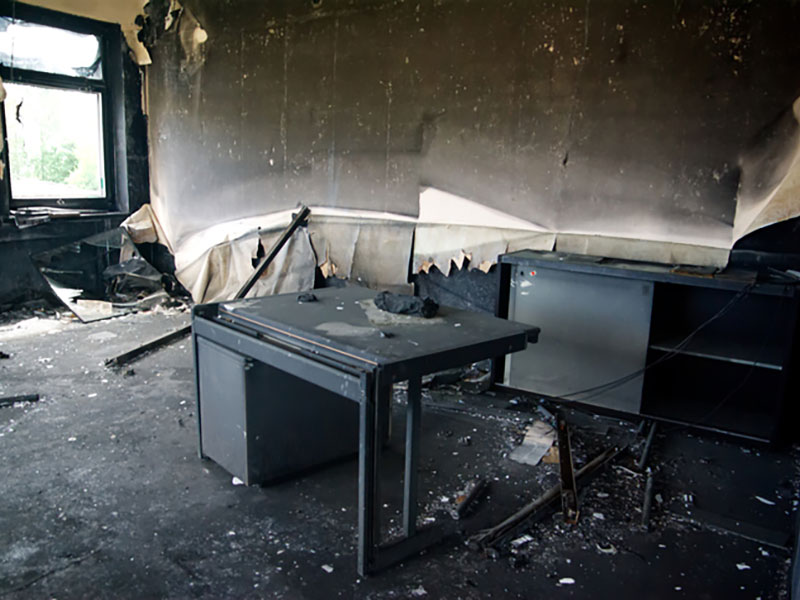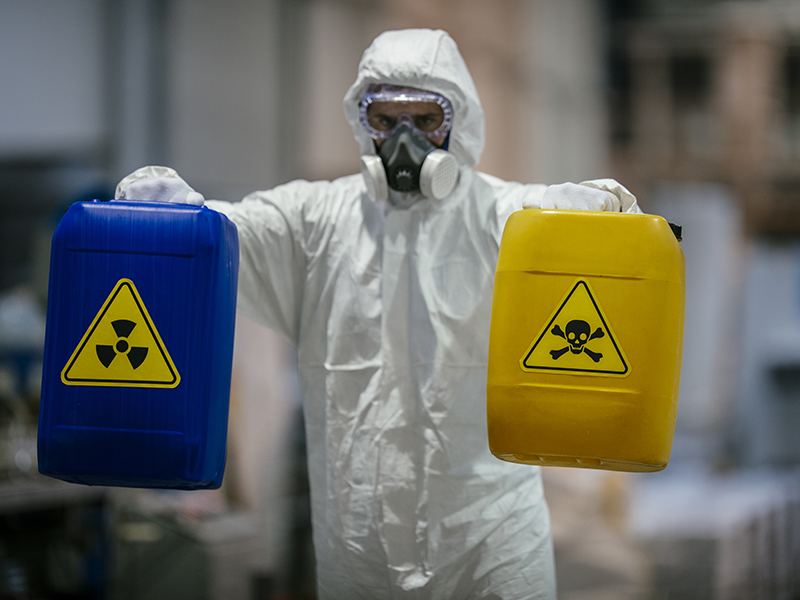Asbestos Removal – What You Need to Know

If you’re reading this article, chances are you think your commercial structure may have asbestos-containing building products. Or you already had an asbestos test performed, and you’re sure about it. So now what do you do?
If you’re not planning a renovation or other commercial construction project, you may be able to leave things as is. But asbestos does deteriorate over time, causing a hazard to your employees and your customers. And if you are planning a project that will entail demolition or tearing out old construction materials, you need to plan for professional asbestos removal, also known as asbestos abatement.
What Is Asbestos?
Asbestos is a naturally-occurring, fire-resistant mineral that is mined all over the world. Asbestos actually means “inextinguishable” in Greek. It’s composed of soft and flexible fibers that can be woven into other products. For a time, people called asbestos “the miracle fiber.”
Because asbestos doesn’t burn, for many years it was highly valued as a component in construction materials. In the United States, asbestos was once commonly used in a variety of construction materials, including:
- Roof shingles
- Shingle siding
- Vermiculite insulation and ceiling tiles
- Popcorn ceilings
- Some drywall
- Plaster and putties
- Electrical switchboard panels
- Plumbing fixtures
- Pipe and duct coverings
- Boiler and fireplace insulation
- Vinyl floor tiles
Since it was discovered that asbestos is a known carcinogen, the laws changed. Today’s construction materials do not contain asbestos. But if your commercial facility was built in the 1970s or before, chances are very good that you have asbestos in your building. If you’re considering a renovation or restoration project, you need to keep this in mind.
The Dangers of Asbestos
Asbestos is a fibrous material that can go airborne. Asbestos exposure by inhaling or accidentally ingesting it can lead to serious health issues, including:
- Mesothelioma cancer
- Asbestosis
- Pleural plaques
- Asbestos lung cancer
According to the Mesothelioma Center, doctors diagnose nearly 3,000 people with mesothelioma each year in the United States. And an estimated 10,000 people in the U.S. die each year from some sort of asbestos-related disease.
When Was Asbestos Banned?
It’s a myth that there is a blanket ban on the use of asbestos in products made in the United States. Granted, knowing the health dangers, most manufacturers in the U.S. have voluntarily stopped using it in their products.
Some history
It wasn’t until the late 1970s that the U.S. Consumer Product Safety Commission (CPSC) banned companies from using asbestos in wallboard patching compounds and gas fireplaces. This is because it was discovered the asbestos fibers in these products could be released into the air while in use.
In July of 1989, the Environmental Protection agency (EPA) issued a final rule banning most asbestos-containing products. But in 1991, the Fifth Circuit Court of Appeals overturned the regulation, allowing uses established prior to 1989. The 1991 ruling continues to ban the use of asbestos in products that have not historically contained asbestos, also known as “new uses” of asbestos.
In addition, products containing asbestos that have been discontinued may not be manufactured again in the U.S. without EPA approval.
The Asbestos Removal Process
Sometimes, it’s not discovered that you have asbestos until a construction project is underway. If this is the case, PBI Commercial stops all work and calls in a professional asbestos abatement company we work with. They are specially trained to remove asbestos safely. They hold all of the required licenses for Maryland, Washington DC, and Virginia.
Here’s what the asbestos removal process entails:
- A certified asbestos inspector taking samples
- Analyzing samples at a laboratory to determine the extent of the problem.
- Establishing the work area
- Disabling HVAC and electrical systems
- Installing decontamination enclosure systems
- Sealing doors, windows, and air vents with plastic sheeting and duct tape
- Wet wiping or using a vacuum with a HEPA filter on non-moveable items to keep the asbestos from going airborne
- Sealing fixed items with plastic sheeting and duct tape
- Covering any surface not getting abated with plastic sheeting
- Posting easily visible warning signs that read: Danger, Asbestos, Cancer and Lung Disease Hazard, Authorized Personnel Only, Respirators and Protective Clothing Are Required in this Area
- Cleaning up the asbestos using a HEPA vacuum
- Disposing of the asbestos, plastic sheeting, duct tape, and other contaminated materials — All asbestos-containing waste is sealed in leak-tight containers while still wet. Workers then label the containers clearly and take it to qualified landfills that accept asbestos. The landfill will follow specific requirements to secure the waste and preventing asbestos fibers from escaping into the air.
Asbestos abatement workers will wear personal protective equipment (PPE) at all times during the testing, preparation, cleanup, and removal process. This includes a respirator, and protective clothing including goggles, disposable coveralls, disposable gloves, and rubber boots.
Asbestos Removal Cost
The cost of asbestos removal will vary based on the extent of the issue. Commercial buildings can become multi-million dollar projects. Encapsulating asbestos, or covering it with a protective barrier, can reduce asbestos removal costs. You may have seen a multi-story building encased in plastic sheeting, or seen plastic sheeting draping down from a commercial renovation project. This is a likely indication that there is an asbestos abatement project underway.
You will need to discuss encapsulation with the asbestos removal company before your project begins.
Once the asbestos is safely removed, PBI can get your commercial construction project moving forward again.
Avoid Risk and Hire Trusted Partners for Your Commercial Construction Needs
Every commercial construction project has unique challenges and unknowns. That includes the need for asbestos removal. We subcontract out asbestos removal to guarantee your abatement project is handled by the experts. Once the removal process is complete, we’ll keep your project moving forward.
PBI Commercial delivers turnkey solutions with proven results, so you can have one trusted partner for resolving any restoration, renovation, or construction challenge that lies ahead. We proudly serve the Mid-Atlantic region, including Maryland, Washington DC, and northern Virginia.
Challenges Resolved. Guaranteed.



